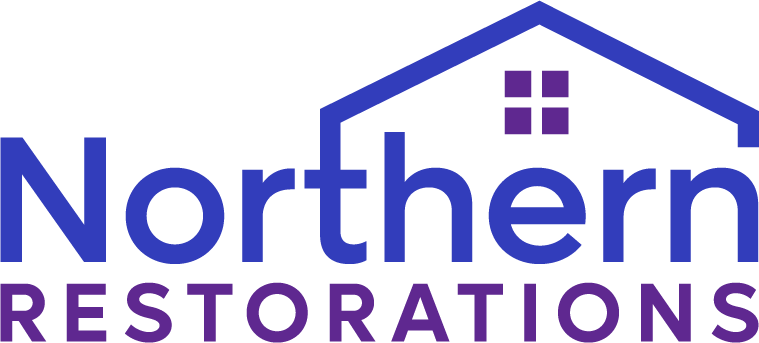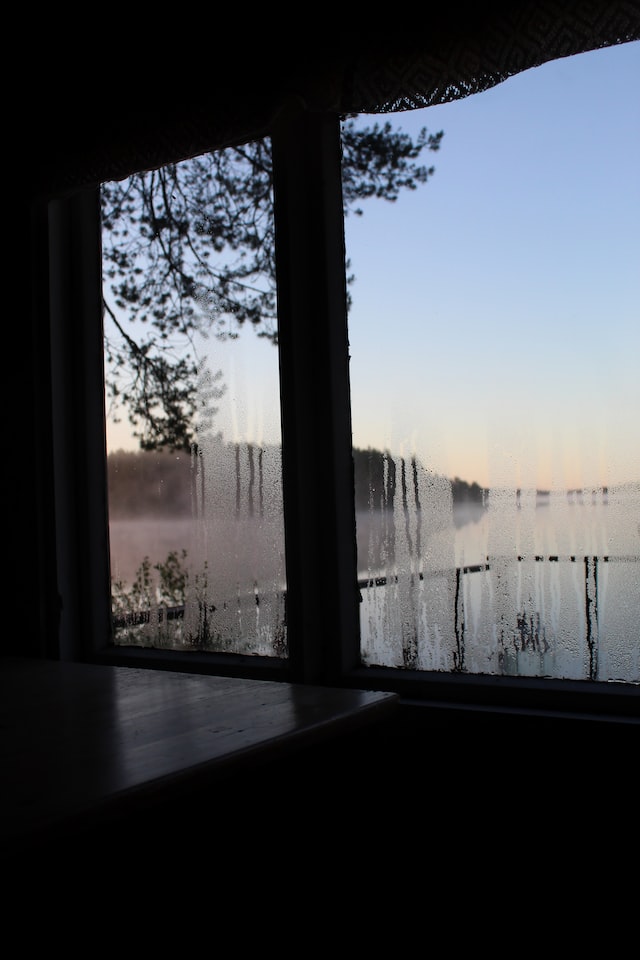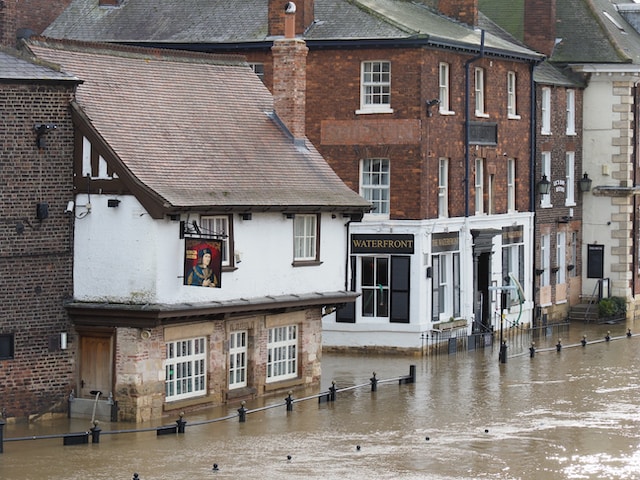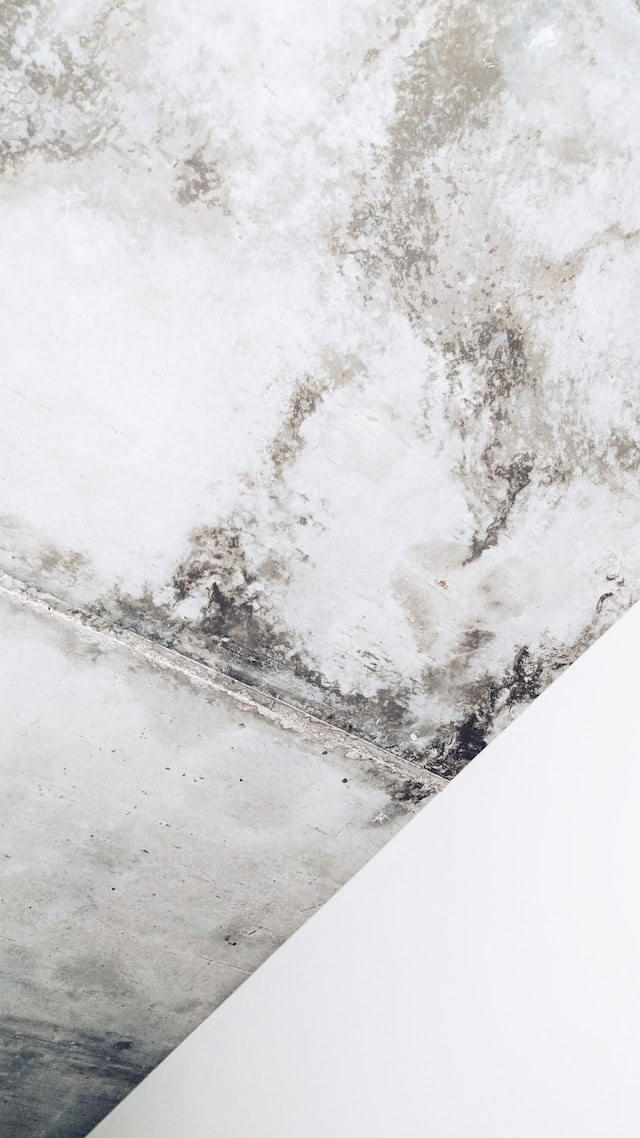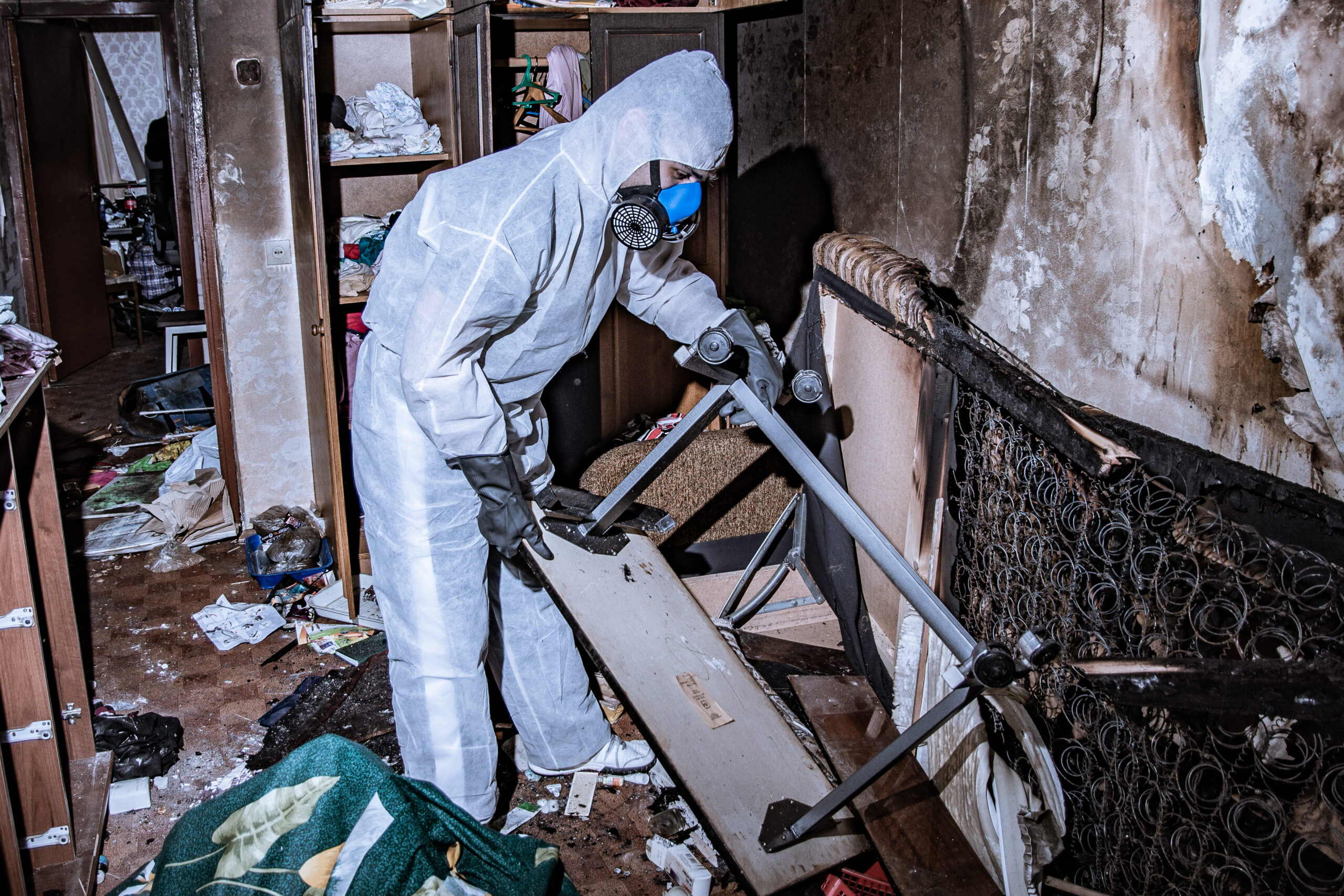Fire damage restoration services are crucial in helping homeowners and commercial building managers restore their properties after a devastating fire incident. These professionals have the necessary skills, equipment, and certification to deal with various types of damage caused by fires. In this guide, we’ll discuss the importance of hiring professional fire damage restoration services and explore their role in restoring properties to pre-fire conditions, as well as outlining the various stages of the process including assessment, securing premises, water removal and smoke residue cleanup.
We will also talk about the different stages involved in the fire damage restoration process, including assessment, securing premises, water removal (yep, we’ll explain more, shortly!) cleanup techniques for smoke residue, and working closely with insurance companies. Then, we’ll discuss costs associated with restoring properties damaged by fires and provide tips on comparing quotes from different fire damage restoration companies.
In addition to addressing lingering smoke odours through cleaning air ducts or using ozone treatments as an effective method to eliminate them completely; we’ll tackle challenges posed by gas-fueled fires that require specialised techniques for chemical residue cleanup. By understanding these aspects of fire damage restoration services better; homeowners and property managers can make informed decisions when faced with such unfortunate situations.
Table of Contents:
- Understanding Fire Damage Restoration
- Importance of Hiring Professional Restoration Services
- Minimising Health Impacts After a Fire
- Choosing the Right Restoration Service Provider
- Assessing Fire Damages & Securing Property
- Cleanup Procedures & Dealing with Soot Residues
- Repairs & Rebuilding Fire-Damaged Areas
- Prevention Strategies & Maintenance Tips
- FAQs in Relation to Fire Damage Restoration Services
- Conclusion
Understanding Fire Damage Restoration services
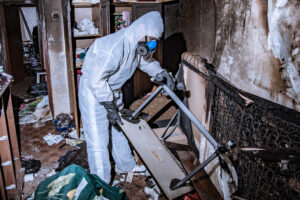
Professional fire damage restoration services specialise in handling fire and smoke damage as well as water and soot damage that often occurs during firefighting efforts. The primary goal of these services is to restore properties to their pre-loss condition while minimising the impact on occupants’ health.
Importance of Hiring Professional Restoration Services
Hiring a professional fire damage restoration company ensures that your property will be recovered and repaired wherever possible using industry-standard techniques, backed by proper training and certification. This guarantees an efficient recovery process as well as reduces the risk of further damages or complications due to poor cleanup methods. Professionals also use advanced equipment specially designed to address different types of fire-related issues such as odours, stains, structural damages, and more.
Minimising Health Impacts After a Fire
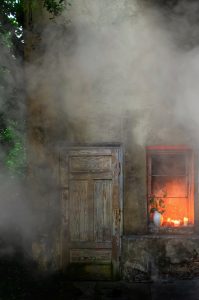
The aftermath of a fire can have serious health risks due to exposure to toxic substances released during the fire or lingering in damaged materials like insulation or drywall. A good fire damage restoration company prioritises occupant safety by using measures aimed to reduce potential hazards associated with smoke inhalation or contact with harmful residues left behind after fires are extinguished.
- Air quality management: Proper ventilation systems help remove hazardous particles suspended in the air following fires, while HEPA-filtered vacuums capture fine particulates settled onto surfaces throughout affected areas.
- Soot removal: Specialised cleaning agents break down stubborn soot deposits adhering to walls, ceilings, and other surfaces, in order to prevent potential respiratory issues or skin irritation.
- Water removal: Rapid extraction of excess water resulting from firefighting efforts is crucial for preventing the growth of mould and mildew that can exacerbate existing health concerns or introduce new ones.
Understanding fire damage restoration services helps property owners make informed decisions when faced with a fire disaster. By hiring professional companies equipped with the necessary expertise and tools, homeowners can ensure their properties are restored safely while minimising any negative impacts on occupant health.
Fire damage restoration services can be complex and need the work of certified, efficient professionals. Choosing the right provider for your needs can help ensure you receive quality results and minimise health impacts after a fire.
Choosing the Right Restoration Service Provider
After experiencing a fire disaster, it is crucial to find the best fire damage restoration services provider in your area. Once you’ve some potential companies, coordinate closely with your insurance provider to ensure the most efficient restoration of your property.
Researching Local Companies
To begin your search for a reputable fire damage restoration company, start by asking friends or family members for recommendations (though hopefully none have ever had to hire one!). To find a reliable fire damage restoration firm, you can use the web and type in search terms like “fire repair” or “water extraction” with your area.
Make sure to read reviews from previous clients and check if they have any relevant certifications with bodies like the BICSC. It’s essential to choose a company that has experience dealing with various types of fires and water damage, so they can effectively handle any situation that comes up during the restoration process.
- Contact multiple companies for quotes and compare their services offered.
- Ask about their response time – quick action is vital when dealing with fire-damaged properties. Getting a quick response from your initial email is usually a good sign for this!
- Avoid choosing based solely on price; with important work like this, quality should always take priority over costs.
Working With Insurance Providers
Your insurance provider plays an essential role in helping you recover from a fire disaster. They will often recommend preferred contractors who are experienced in handling claims related to fire damage, water intrusion caused by firefighting efforts, and other associated issues. However, it’s still important to do some research on these recommended providers before making any decisions since not all insurers prioritise quality workmanship over cost-saving measures.
You’ll need detailed documentation of all damages sustained during the fire, including photographs and descriptions of affected areas. This information will be crucial when working with your insurance company to determine the exact cost of rebuilding or restoring your property.
Remember that communication is key during this process – keep in touch with both your chosen restoration specialists and insurance provider throughout every step of the project. Keeping in contact with both your restoration experts and insurance company is key for a successful transition from the aftermath of disaster to restored property, enabling you to go back home promptly. We know it can be a pain to have to do this after a fire, but it’s important to make sure costs are covered and nothing gets missed!
When picking a fire damage restoration company, it is essential to evaluate their expertise and qualifications. With that in mind, assessing fire damages and securing property should be your next step.
Assessing Fire Damages & Securing Property
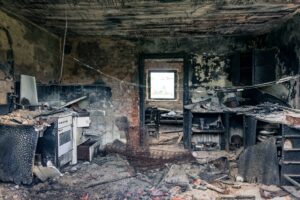
Before entering a property affected by fire, contractors must receive official permission from relevant authorities. Once access is allowed, the team must guarantee safety for all occupants who may still be inside as well as their own. Once granted access, they will first confirm if it’s safe to enter before assessing damages sustained due to both flames and ensuing water intrusion caused by firefighting efforts.
Gaining Official Permission for Entry
To gain entry into a fire-damaged property, official permissions are needed from local authorities such as fire departments or building inspectors. These professionals can assess whether it is safe for restoration teams to begin their work on-site. It’s essential not only for legal reasons but also because there could be hidden dangers within the structure that may pose risks during cleanup and repair processes.
Safety Precautions During Assessments
Once given clearance to enter a damaged property, restoration experts take several safety precautions while conducting assessments:
- Evaluating structural integrity: The team checks for signs of compromised walls, floors, or ceilings that might collapse under pressure.
- Detecting hazardous materials: They look out for asbestos or other toxic substances that require special handling during removal.
- Mitigating electrical hazards: Restoration specialists make sure all power sources are disconnected before starting any work involving electricity.
- Avoiding slips and falls: Water damage often accompanies fires; so crews will wear footwear with slip-resistant soles to prevent accidents.
Based on this assessment, they’ll provide an accurate cost estimate for repair or reconstruction works needed. In order to make the right decision regarding restoring a property to its original state, this information is essential for both homeowners and insurance companies.
Securing Property During Restoration Process
To protect your property from further damage during the fire damage restoration process, it’s essential to secure all entry points such as doors and windows. Temporary fencing can also be installed around the perimeter of your home or property to deter trespassers who might cause additional harm or theft. To be on the safe side, valuable items should be removed from the premises if possible until restoration work is complete.
After assessing the damages and securing the property, it is important to begin cleanup procedures and dealing with soot residues. To ensure safety during this process, we must take precautions such as removing soot from surfaces and neutralising odours through sanitisation.
Cleanup Procedures & Dealing with Soot Residues
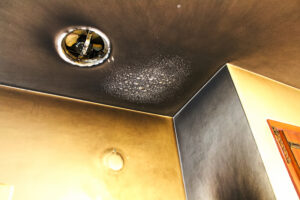
After a fire, one of the most critical pieces of work that fire damage restoration services do is dealing with soot residues and ensuring they’re cleaned thoroughly. These processes are essential to prevent further damage to your property and minimise potential health risks associated with exposure to smoke and soot.
Removing Soot from Surfaces
Soot removal involves cleaning interior surfaces such as ceilings, walls, floors, and any exterior surfaces affected by the fire. Professional restoration companies use specialised equipment like vacuums designed for soot removal, dry sponges, and chemical cleaners specifically formulated for this purpose. It’s important that homeowners do not attempt to clean up soot themselves since improper techniques can lead to permanent staining or smearing on surfaces.
- Vacuuming: High-efficiency particulate air (HEPA) vacuums are used by professionals to remove loose particles without spreading them around.
- Dry Sponge Cleaning: Dry sponges made from rubber effectively lift away surface-level soot without adding moisture that could cause additional problems.
- Chemical Cleaners: Specialised cleaning agents break down stubborn residue while protecting materials underneath from further harm.
Odour Neutralisation and Sanitisation
Beyond removing visible signs of fire damage like charred debris or discoloured surfaces due to smoke stains, it’s also important for professional restorers to remove lingering odours caused by fires. To get rid of these smells effectively, they utilise various methods including ozone treatments which help break down odour-causing molecules at their source.
Sanitisation is another crucial aspect of fire damage restoration, especially when water damage has occurred due to firefighting efforts. To prevent mould growth and other secondary issues related to water intrusion, professional restorers use antimicrobial chemicals during the cleanup process. These treatments help ensure a healthy environment for occupants once the property is restored.
In addition to these specialised techniques, proper ventilation plays an essential role in odour removal and sanitisation. By ensuring adequate airflow throughout affected areas, professionals can expedite drying times while minimising potential health risks associated with exposure to smoke or soot residues.
At Northern Restorations, we understand the importance of fire damage restoration certification and training. Our team of experts is equipped with the knowledge and tools necessary to provide comprehensive restoration services. Contact us today to learn more about our fire damage restoration services and water removal services, and how we can help prevent fires in the future.
Cleanup procedures and dealing with soot residues are essential steps in restoring a property after a fire. Repairs and rebuilding the affected areas require an understanding of cost factors, types of fires, and their unique challenges.
Repairs & Rebuilding Fire-Damaged Areas
In cases where extensive fire damage has occurred, the final step in returning a property to its pre-loss condition is performing necessary repairs or rebuilding fire-damaged areas. The cost of restoration depends on a few factors, like the type and origin of the fire.
Cost Factors for Restoration
Different types of fires cause varying degrees of damage which directly impacts the overall cost for fire damage restoration services. Some common factors that influence restoration costs include:
- The extent of structural damage caused by flames and heat.
- Water removal requirements due to firefighting efforts.
- Cleanup procedures needed for soot residues and odours.
- Reconstruction work required if there’s significant structural loss.
- The type of fire that’s occurred and how much it’s spread through the property internally.
Types of Fires and Their Unique Challenges
Fires are classified into different categories based on their origin, fuel source, or how they spread. Each type presents unique challenges during the process of restoring a property after a disaster:
- Kitchen Fires: Kitchen fires often result from cooking mishaps involving grease or oil. These blazes tend to produce thick smoke with heavy soot deposits requiring specialised cleaning techniques like chemical sponges or ultrasonic machines. Learn more about preventing kitchen fires.
- Electrical Fires: Caused by faulty wiring, overloaded circuits or malfunctioning appliances, electrical fires can be difficult to extinguish and may require extensive repairs due to the hidden nature of their origin. Discover tips for electrical fire safety.
- Furnace/Heating System Fires: Maintenance issues with heating systems can lead to fires that cause significant damage within walls or ceilings. Proper inspection and maintenance are crucial in preventing these types of incidents.
- Wildfires: Natural disasters like wildfires pose unique challenges as they often affect large areas and multiple properties simultaneously. Restoration efforts after a wildfire typically involve debris removal, erosion control measures, and reforestation initiatives. Learn about preparing for wildfires.
In order to restore a property effectively after a fire disaster, it’s essential to understand the type of blaze involved along with its specific restoration requirements.
Working closely with experienced professionals like our team ensures you receive expert guidance throughout the entire process. Our team is certified in fire damage restoration services and can also provide preventative measures to help prevent fires in the future. We also offer water damage restoration services, including water removal, to help mitigate further damage to your property. Contact us today to learn more.
Rebuilding any charred sections of a property following a fire can be quite costly and hard, but with the correct expert aid it is achievable. With preventive strategies in place such as regular maintenance and smoke detectors, you can reduce your chances of experiencing costly repairs due to fires.
Prevention Strategies & Maintenance Tips
Unfortunately, thousands of lives are lost annually due to residential fires. Maintaining fully functional smoke detectors within residential spaces is an essential aspect of fire prevention employed universally across the world today. Homeowners and property managers can take a range of measures to avoid fires, save life & limb and lessen destruction.
Importance of Smoke Detectors
Smoke detectors play a vital role in alerting occupants of a fire early enough for them to escape safely. To ensure the effectiveness of these devices:
- Install smoke alarms on every level of your home or building, including basements and attics.
- Maintain a minimum distance between alarms and cooking appliances to reduce false alarms.
- Test your smoke alarms monthly by pressing the test button.
- Battery-operated units should have batteries replaced at least once per year or when they start emitting low battery signals (chirping).
- All smoke detectors should be replaced every ten years as their sensors degrade over time.
Regular Cleaning of Air Ducts/Vents
Cleaning air ducts and vents regularly helps reduce risks posed by trapped odours being carried through properties over time; while ozone treatments are effective means of breaking down molecules responsible for causing unpleasant smells at the source. Here are some tips for keeping your air ducts clean:
- Schedule professional inspections: Have HVAC professionals inspect your system annually or biannually depending on usage.
- Change air filters: Replace your HVAC system’s air filter every 30-90 days, depending on the type of filter and usage.
- Clean vents and registers: Regularly vacuum or dust your home’s supply and return vents to prevent buildup of debris that can restrict airflow and cause fire hazards.
On top of these, it’s essential for property owners to be aware of potential fire hazards in their buildings. This includes keeping flammable materials away from heat sources, using caution with candles or space heaters, properly maintaining electrical systems, and ensuring that all occupants are familiar with emergency evacuation procedures. By being proactive with fire prevention and maintenance, you can reduce the risk of fires occurring while also minimising the damage they can cause if they do occur.
Fire Damage Restoration Services FAQs
What is fire damage and how does restoration work?
Fire damage refers to the physical destruction caused by fires, including structural damages, smoke residue, and water damage from firefighting efforts. Restoration involves a series of steps such as assessment, securing the premises, extraction & drying, cleanup of smoke residue, and rebuilding. Professional fire damage restoration specialists use advanced techniques to restore properties efficiently.
What is the IICRC S700 standard for professional fire and smoke damage restoration?
The IICRC S700 Standard provides guidelines for professional fire and smoke damage restoration services. It covers principles of cleaning structures affected by combustion residues while ensuring safety measures are followed during the process. The standard aims to maintain high-quality standards in restoring damaged properties effectively.
How much does thermal fogging cost?
Thermal fogging costs vary depending on factors like property size and severity of odours. On average, it can range between £200-£600 per treatment session for residential spaces. For accurate pricing information specific to your situation, get in touch and we’ll help you with a quote!
Preventing Fires
Preventing fires is crucial to avoid fire damage. Here are some tips to prevent fires:
- Install smoke detectors and check them regularly
- Keep flammable materials away from heat sources
- Don’t leave cooking unattended
- Unplug appliances when not in use
- Have a fire extinguisher readily available
Water Damage and Restoration Certification
Water damage can also occur during firefighting efforts. It’s important to address water damage as soon as possible to prevent further damage and mould growth. Professional restoration companies with restoration certification can help with water removal and restoration.
Conclusion
In conclusion, fire damage restoration is a complex process that requires the expertise of professionals. From assessing damages and securing premises to cleaning up smoke residue and preventing lingering odours, there are many steps involved in restoring properties damaged by fires. It’s essential to collaborate with your insurer during the procedure and assess estimates from a few restoration businesses in order to guarantee you obtain top-notch service at a reasonable cost.
If you’re in need of fire damage restoration services, we can help. Our team of certified professionals has years of experience in handling all types of property disasters including fire damage, water damage, mould removal, and more. Contact us today for a free quote!
